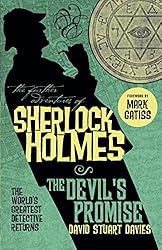
Every Friday Book Beginnings on Friday is hosted by Gillion at Rose City Reader where you can share the first sentence (or so) of the book you are reading, along with your initial thoughts about the sentence, impressions of the book, or anything else the opener inspires.
This week I’m featuring Moriarty by Anthony Horowitz, one of my TBRs that I’ll be reading next.

The Reichenbach Falls
Does anyone really believe what happened at the Reichenbach Falls? A great many accounts have been written but it seems to me that all of them have left something to be desired – which is to say, the truth.
Also every Friday there is The Friday 56, hosted by Freda at Freda’s Voice.
 These are the rules:
These are the rules:
- Grab a book, any book.
- Turn to page 56, or 56% on your eReader. If you have to improvise, that is okay.
- Find any sentence (or a few, just don’t spoil it) that grabs you.
- Post it.
- Add the URL to your post in the link on Freda’s most recent Friday 56 post.
Page 56:
‘It is a deliberate attempt to communicate something to Moriarty that will remain secret should it fall into the wrong hands.’
‘So there is a code!’
‘Exactly.’
‘And you were able to crack it!’
‘Through trial and error, yes.’ Jones nodded. ‘I take no credit for it, mind. Where Holmes has gone, I have merely followed.’
Blurb (Goodreads)
Sherlock Holmes is dead.
Days after Holmes and his arch-enemy Moriarty fall to their doom at the Reichenbach Falls, Pinkerton agent Frederick Chase arrives in Europe from New York. The death of Moriarty has created a poisonous vacuum which has been swiftly filled by a fiendish new criminal mastermind who has risen to take his place.
Ably assisted by Inspector Athelney Jones of Scotland Yard, a devoted student of Holmes’s methods of investigation and deduction, Frederick Chase must forge a path through the darkest corners of the capital to shine light on this shadowy figure, a man much feared but seldom seen, a man determined to engulf London in a tide of murder and menace.
~~~
Anthony Horowitz is one of my favourite authors. This is his second Sherlock Holmes novel and I’m hoping, no I’m expecting it to be as good as his first, The House of Silk.
Years ago I read Arthur Conan Doyle’s short story The Final Problem, in which he meant to end Sherlock Holmes’ life as he wanted to write more literary works, but needless to say really, I have forgotten most of the details.
What do you think? Would you keep reading?
 The full title of this book is
The full title of this book is  This is the first Sherlock Holmes and Dr Watson mystery, published in 1887.
This is the first Sherlock Holmes and Dr Watson mystery, published in 1887. 


 Favourite Sherlock Holmes Stories is a collection of twelve stories that Arthur Conan Doyle rated as his very best. It includes what Conan Doyle described as ‘the grim snake story’, The Speckled Band, and The Red-Headed League and The Dancing Men on account of the originality of the plot of each.
Favourite Sherlock Holmes Stories is a collection of twelve stories that Arthur Conan Doyle rated as his very best. It includes what Conan Doyle described as ‘the grim snake story’, The Speckled Band, and The Red-Headed League and The Dancing Men on account of the originality of the plot of each.